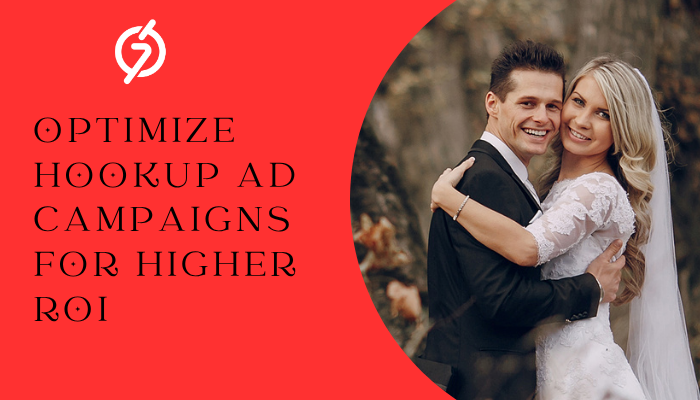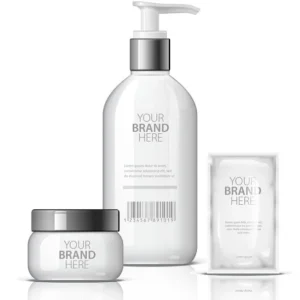Every advertiser wants one thing from their campaigns: a solid return on investment. But when it comes to Hookup ads, the challenge goes beyond just impressions and clicks. This vertical is competitive, emotionally charged, and heavily regulated. Standing out means understanding not just who your audience is, but why they click.
Hookup advertising is an interesting space. Unlike traditional dating ads, these campaigns thrive on immediacy and connection. Audiences respond to relevance, mood, and intent. Yet, many advertisers still run broad campaigns that don’t speak to these nuances—wasting ad spend and losing conversions.
Let’s break down how you can optimize your Hookup ad campaigns to earn higher ROI, attract quality users, and use smarter targeting that actually converts.

The Real Opportunity in Hookup Advertising
According to industry data, over 35% of all online dating ad clicks come from hookup-related searches. But here’s the catch: only a fraction of those clicks turn into real conversions.
Why? Because most campaigns focus on volume, not value. Advertisers assume that higher traffic equals higher revenue, but in this niche, intent-driven engagement wins every time. That’s where Hookup ad optimization makes all the difference.
When Clicks Don’t Convert
Many advertisers in the dating vertical face this issue: lots of clicks, low conversions.
You run a few online hookup ads, target singles by interest and age, and you start seeing a traffic spike. It looks good at first—until you notice that only a small portion of that traffic is converting.
There’s a reason behind it: not all visitors are in the same stage of intent. Some are curious, others are comparing, and only a few are ready to act.
Without a clear understanding of your Conversion Funnels for Online Hookup Ads, you’re essentially guessing who’s serious and who’s just browsing.
Audience Behavior Matters More Than Ad Spend
One of the biggest lessons in hookup advertising is that behavioral patterns matter more than demographics.
For example, users aged 25–35 might respond better to bold, flirty headlines, while those above 35 often look for emotional cues, discretion, or authenticity. If you serve the same creative to both, you’re bound to lose one segment.
Optimization begins when you treat each click as a contextual response, not just a metric.
Try testing variables like:
- Tone of ad copy (casual vs. suggestive)
- Image type (person-centric vs. abstract)
- CTA wording (“Join Now” vs. “Meet Real Singles”)
- Time of day for ad placement
Even a small tweak in ad tone or timing can significantly improve CTRs and cost-per-conversion.
The Power of Smart Segmentation
Instead of targeting “everyone looking for fun,” break your audience into micro-segments.
Think of it like this: not all hookups mean the same thing to everyone. Some seek casual chats, others want real-world connections. The more you narrow your targeting, the more your creatives can speak directly to intent.
If you’re using a Hookup Ad Network, leverage the platform’s segmentation tools. You can set filters for device type, location radius, activity hours, and even user behavior over time.
By doing this, your hookup advertisements become more personal—and personal is powerful in this vertical.
Audit Your Campaign Structure
Optimization starts with analysis. Look at:
- Which creatives are underperforming
- Where your audience drops off
- How much each lead costs compared to your average value per conversion
If your campaign has multiple ad groups, analyze which ones actually drive sign-ups or paid interactions. Sometimes, deleting poor-performing segments saves more money than increasing bids.
Craft Intent-Based Ad Copy
The best hookup ads are written for mindset, not just demographics.
Let’s say you’re targeting single professionals. Instead of “Find local singles tonight,” try “Connect with real people who get your lifestyle.”
It’s subtle, but the shift from generic to relatable changes how users perceive your ad. The right copy turns curiosity into clicks—and clicks into conversions.
Explore proven ad strategies for Hookup ads.
Optimize Landing Pages for Flow
Even the most engaging ad won’t save a poor landing page.
Here’s what to check:
- Headline alignment: Does the landing page headline match the ad promise?
- CTA clarity: Is your call-to-action immediate and visible?
- Visual focus: Are the visuals suggestive but not misleading?
- Loading speed: Does the page load in under 3 seconds?
Every extra second of delay can cost you conversions. A/B test your layouts, form fields, and button colors. Hookup traffic often comes from mobile, so mobile-first design is non-negotiable.
Use Retargeting to Reclaim Missed Leads
In this niche, retargeting is your secret weapon.
Many users click but don’t convert right away. By running retargeting ads, you remind them of the connection they almost made. Keep your follow-up creatives lighter, more playful, and direct.
For instance:
“Still thinking about that match? Your next chat could be one click away.”
Retargeting improves conversion rates by as much as 30% for hookup ad campaigns when done right.
Test Your Creatives Like a Scientist
Split testing isn’t just about finding “the best ad.” It’s about learning what your audience actually wants.
Try testing:
- Different visuals (real people vs. lifestyle shots)
- Copy tone (playful vs. confident)
- CTA position (top vs. bottom)
- Offer type (free trial vs. premium access)
The more data you collect, the more predictable your next campaign becomes. That’s how you start moving from trial-and-error to strategic scaling.
Adjust for Seasonality and Timing
Hookup intent fluctuates during the year. Activity spikes around weekends, holidays, and post-breakup seasons (yes, January and September see noticeable rises).
Adjust your ad spend and placements accordingly. Scheduling campaigns during “high-intent hours” (typically evenings) helps you capture active users when they’re most likely to convert.
Use Smart Bidding and Budget Allocation
If you’re advertising through a hookup ad platform, use automated bidding rules where possible.
Set bid caps for non-converting traffic sources. Increase bids for segments that bring repeat sign-ups. The goal is not just to lower cost per click, but to raise value per click.
When your system learns which user profiles yield the best return, it optimizes itself faster than manual control ever could.
Track What Actually Drives ROI
Not every metric deserves your attention. Clicks are vanity; conversions are currency.
Here’s what to monitor instead:
- Conversion rate (real sign-ups or verified leads)
- Cost per acquisition (CPA)
- Lifetime value (LTV) of acquired users
- Retention rate after first visit
If your analytics platform allows event tracking, measure micro-actions too (like profile views, message initiations, or time spent on page). These behaviors often predict conversion quality better than CTR.
Use Ad Creatives That Match Platform Culture
Every hookup ad network has its own “vibe.” What works on a native network might flop on social placements.
Native platforms favor storytelling, subtle headlines, and emotionally suggestive imagery. Meanwhile, push ads need shorter, high-contrast creatives.
Study the tone of your traffic source and match it. When your ad fits naturally into a user’s browsing experience, it feels less like an interruption and more like an invitation.
Scale What Works — Gradually
Once you’ve found a profitable formula, don’t rush to scale. Gradual scaling allows you to maintain ROI while expanding reach.
Increase budget by 10–15% weekly instead of doubling overnight. Monitor how performance reacts to new spend levels. That’s how you build sustainable success instead of chasing short-term spikes.
Stay Compliant with Ad Guidelines
The hookup vertical often faces stricter compliance rules. Avoid overly explicit visuals, misleading claims, or aggressive language.
Staying compliant keeps your ads running longer, builds brand trust, and reduces account suspensions. The smartest advertisers are those who balance creativity with responsibility.
Keep Testing and Learning
Optimization is never finished. Ad fatigue, user behavior, and platform algorithms evolve constantly.
Set a rhythm—weekly reviews, monthly reports, quarterly adjustments. Keep refining your audience segments and creative approach. With every iteration, your ROI compounds.
Ready to Take the Next Step?
If you’re serious about scaling your campaigns and getting measurable results, it’s time to move beyond guesswork. Register on a hookup ad platform and start optimizing for higher ROI with smarter targeting and better creative control.
Conclusion
Optimizing hookup ad campaigns isn’t about chasing clicks—it’s about mastering intent, timing, and message relevance. The advertisers who win in this space don’t spend more; they spend smarter.
They analyze, adapt, and align every element—ad copy, landing pages, bidding, and timing—to the audience’s mindset. Once you do that, ROI becomes a natural outcome, not a lucky result.
So, whether you’re new to hookup advertising or refining an existing campaign, remember: the key to high performance is not more ads—it’s better ads.
Keep testing, keep learning, and you’ll see your campaigns deliver not just traffic, but the kind of conversions that matter.




